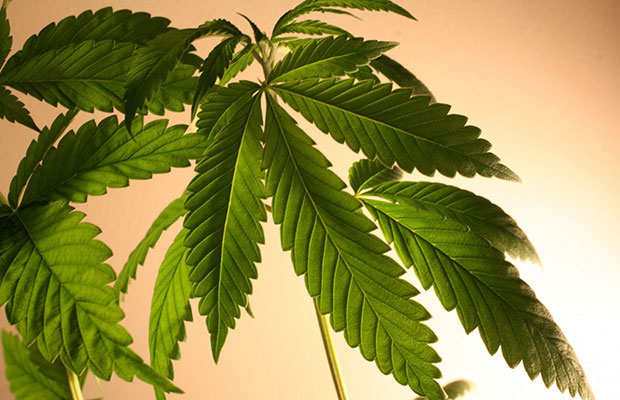Biofuel Showdown: Hemp is America’s Best Hope for Energy Independence
Applying lessons from the past to the present, it is clear that producing fuel ethanol from hemp can help solve the same problems today as the ones Henry Ford attempted to tackle in the 1930s.
Utilized by humans for many thousands of years, hemp has been grown for purposes as diverse as pulp for paper making, fiber for rope, and fabric. The ancient Greek historian Herodotus praised its use and Chinese Mandarins so highly prized their hemp seed that they made its export a capital offense. From the time of the ancient Phoenicians, hemp sails were the first choice of sailors. Thus the first cannabis law passed in Jamestown Colony, Virginia, in 1619 required all farmers to grow hemp. The original draft of the U.S. Declaration of Independence was printed on paper made from hemp, as was the second draft, which was the one signed and released on July 4, 1776. George Washington and Thomas Jefferson were well-known proponents of growing hemp, and praised it widely. Hemp was used all throughout U.S. history and contributed to westward expansion in the form of canvas on covered wagons (the word “canvas” is a derivation of the Arabic word “kannabis”), and brought U.S. paratroopers safely to the ground in World War II.
As part of that war’s massive home front, American farmers were recruited to add industrial hemp to the crop rotation. The plant was already held in high regard. A 1938 edition of Popular Mechanics magazine hailed hemp as “The New Billion Dollar Crop,” citing the arrival of a new machine that would facilitate the removal of the fiber-bearing cortex from the rest of the stalk, greatly reducing the amount of labor required to produce hemp fiber.
With gas prices now stable at over $4/gallon, Americans are clamoring as never before for alternatives to fossil fuels, and talk of ethanol production has increased. But the problem was solved 75 years ago by Henry Ford, who built a sedan which ran on 100 percent hemp ethanol. Much like today, Henry Ford saw the value that lies in agricultural products, particularly byproducts that were seen as waste:
“The fuel of the future is going to come from fruit like that sumach out by the road, or from apples, weeds, sawdust — almost anything,” Ford said. “There is fuel in every bit of vegetable matter that can be fermented. There’s enough alcohol in one year’s yield of an acre of potatoes to drive the machinery necessary to cultivate the fields for a hundred years.”
Ford grew hemp on his estate and saw the crop as a source of fuel as well as for plastic composites, from which he intended to build entire car chassis which would be both stronger and lighter than steel. According to the London Times:
“Even Ford’s involvement in building a “cannabis car” has strong precedents. Henry Ford, the company’s founder, grew (hemp) as part of his experiments with biofuels in the 1930s, but also used the fibers in body panels and other components as an alternative to metal. “
In a tragic twist of history, Ford’s plan for a hemp-built and hemp-powered car was frustrated not by market forces but rather by the heavy hand of federal prohibition, which banned all cannabis cultivation the very same year that he built his first working prototype.
The Solution to High Fuel Prices?
Fast-forward to the present day. States like Washington, Oregon, and Colorado have passed laws authorizing industrial hemp production, although effective implementation remains stuck on the horizon. The previously-obstructive federal government is under unprecedented pressure to allow hemp farming to go forward.
There are some very compelling stats on land kept out of production via government subsidy, farmers paid not to grow anything at all, and about government-owned land not being used. How much unused farmland is available for cellulosic ethanol production? Lubowski, Claassen, and Roberts report that the CRP (Conservation Reserve Program) paid farmers to keep a land area almost the size of Iowa (36,014,080 acres) out of production, at a cost of $1.7 billion to U.S. taxpayers.
Equally disastrous, from a fiscal point of view, is the $6 billion annual subsidy the USDA pays to artificially lower the cost of corn. The subsidy, which from 2011 has been disbursed ostensibly to support biofuels, has created financial incentives for farmers to produce fuel ethanol from an inefficient source at the expense of food crop production, raising world food prices and increasing hunger — all on the taxpayer dime.
Applying lessons from the past to the present, it is clear that producing fuel ethanol from hemp can help solve the same problems today as the ones Henry Ford attempted to tackle in the 1930s. Unlike corn, hemp can be grown in soil unsuitable for food crops, and its deep roots help with soil retention while improving the soil itself.
“Industrial hemp may provide an excellent rotation crop for traditional crops to avoid outbreaks of insect and disease problems or to suppress weeds,” reports the USDA. “Hemp rebuilds and conditions soils by replacing organic matter and providing aeration through its extensive root system.”
If hemp were sown over 15 percent of the 440 acres of land currently under production in the US combined with half of the 35 million acres being kept fallow under CRP, 86 million acres of domestic farmland could be devoted to industrial hemp. Using an estimate of eight dry tons per acre (the median of historical data in Australia and the U.S.), that much land could produce 688 million dry tons of hemp stalk, convertible to 34 billion gallons of cellulosic ethanol. Projected efficiency improvements could raise this figure to up to 68 billion gallons — more than half of the total gasoline consumption of the United States.
The full impact of a switch to hemp ethanol would be somewhat lessened by the energy yield of hemp ethanol, which is about 33 percent lower than that of petroleum gasoline. But this limitation has largely been eliminated by the invention of the FlexFuel engine, which burn any blend between 10 percent ethanol and up to 85 percent ethanol and adjust for horsepower differentials in real time. All factors considered, the relatively low production costs of hemp ethanol (around 25 cents per gallon), combined with the plant’s ability to produce both fuel ethanol and biodiesel feedstock from the same harvest, make hemp ethanol one of America’s most promising technologies for lowering the price of fuel.
By Paul Schneider
Originally published in issue 6 of Cannabis Now. LEARN MORE.

























